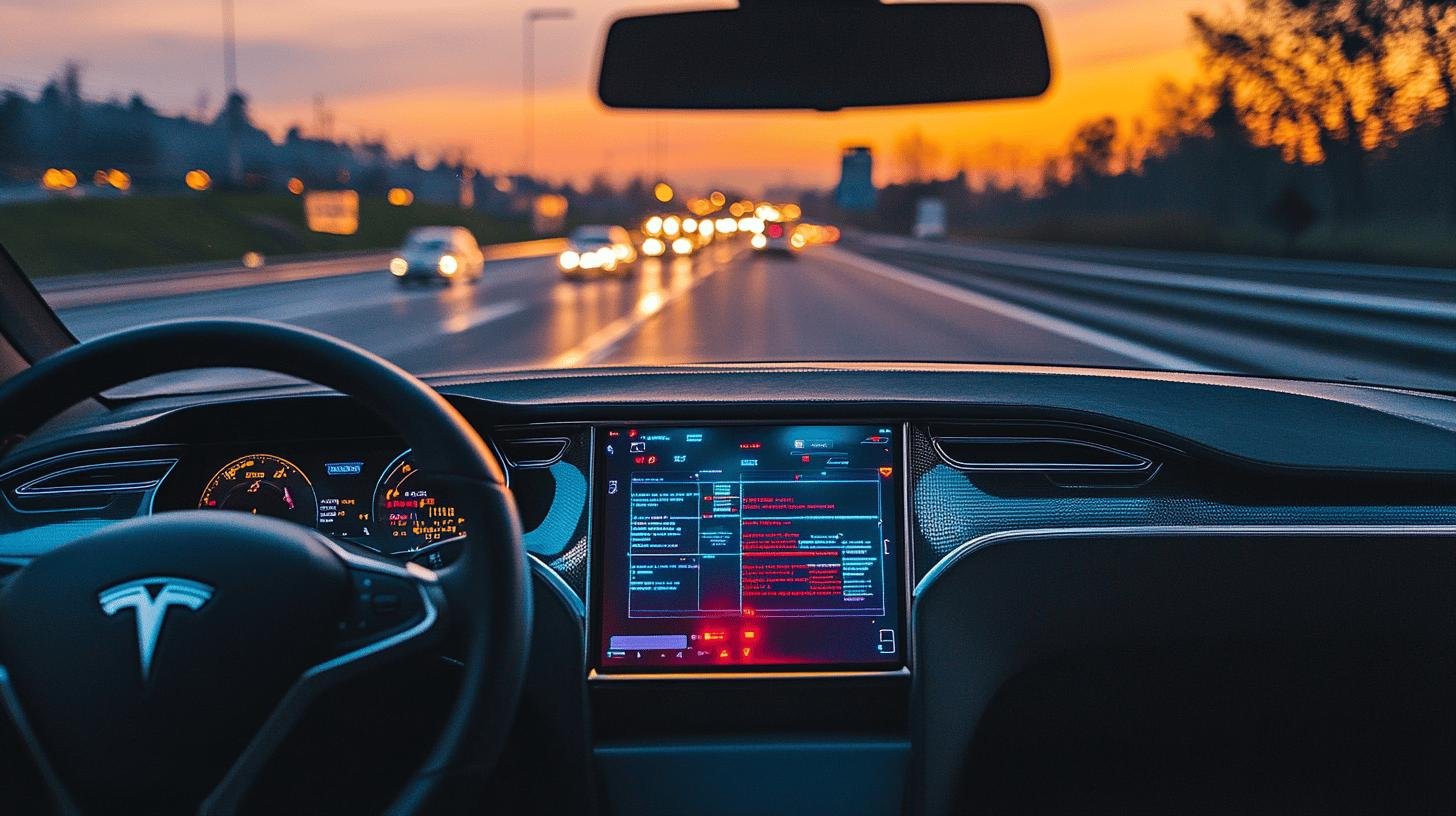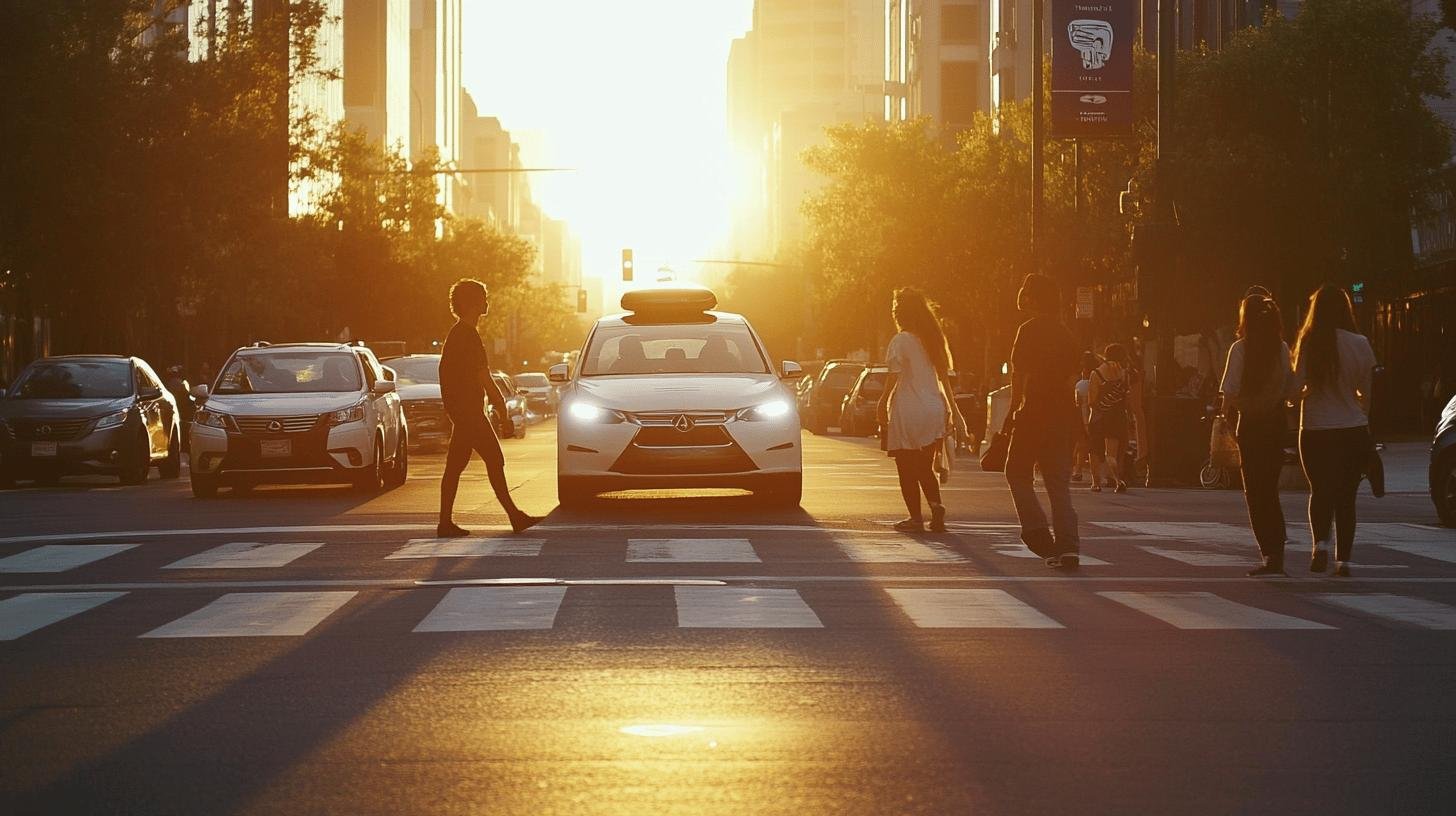Do you think it’s possible? For real, though, how is AI used in self-driving cars? Have you thought about a car that drives itself while you’re kicking back with a coffee? That’s where self-driving car technology comes in! But how do these futuristic rides actually work, and how do they “see” the road? AI uses a mix of sensors and smart computer vision to understand the world around them. We will peek under the hood of these robotic chauffeurs and see how AI merges data like a smoothie, ensuring a smooth drive ahead. Ready to geek out? Fasten your seatbelt!
How AI Powers Perception in Self-Driving Cars
How is AI used in self-driving cars? AI acts as the brain for self-driving cars, helping them “see” the world. Imagine the car as a superhero with super senses! It uses computer vision systems to process information from its surroundings. Sensors like cameras, light detection and ranging (LIDAR), and radar are its eyes and ears, detecting obstacles and reacting to them. These sensors gather data to help the car understand lane markings, traffic lights, and pedestrians. It’s like having a superpower that decides when to stop, go, or take a detour, ensuring a smooth and safe ride.
The main sensors include:
- Cameras
- LIDAR
- Radar
- Ultrasonic sensors
- GPS
Sensor fusion combines these sensory inputs into one big picture, much like assembling a puzzle. This technology is vital for decision-making, ensuring the car knows its surroundings. By blending data from various sources, the AI tools create a detailed map of the environment. This helps the car make smart choices on the road. Without sensor fusion, the car would be like a superhero with blurry vision—cool, but not very effective!
AI’s Role in Decision-Making for Autonomous Vehicles

Again, how is AI used in self-driving cars, especially in autonomous vehicles? AI makes decisions like a super-smart copilot that never tires. Algorithms handle choices such as when to accelerate, brake, or turn. In busy city traffic, quick and precise decisions are crucial. AI analyzes data in real-time to maintain safety while keeping up with traffic—a supercomputer as your chauffeur!
Machine learning helps make these decisions smarter over time. The car learns from experiences, predicting what might happen next. This improves decision-making, like recognizing a pedestrian crossing or a cyclist swerving. It’s almost like the car is mastering road rules, just faster than a human driver!
Neural networks are the secret sauce here. These systems mimic brain functions, processing information swiftly and efficiently. In self-driving cars, they handle intricate tasks like comprehending complex road conditions and making quick decisions. Imagine them as problem solvers, ensuring the car can tackle any road challenge. With neural networks, the car does not just drive—it thinks!
Path Planning and Obstacle Detection with AI
Path planning is like equipping a self-driving car with a smart GPS. These algorithms calculate the safest, most efficient routes considering traffic, road conditions, and weather. They act as an all-knowing navigator, helping the car avoid traffic jams. Imagine your car taking a shortcut because it “knows” a parade is blocking the main street—how cool is that?
Obstacle detection systems are like the car’s eyes, always scanning for dangers. Neural networks play a key role, processing data in real time. This helps the car recognize pedestrians, dodge vehicles, and navigate construction zones. By quickly analyzing surroundings, these networks enable quick decisions, like stopping if a child runs into the road. These systems keep the car moving and safe!
Enhancing Vehicle-to-Vehicle Communication with AI

How is AI used in self-driving cars when it comes to its communication? AI enables cars to communicate, sharing data like speed, position, and road conditions. Imagine cars talking to each other to keep everyone safe and moving smoothly! This communication is crucial for autonomous navigation. It helps maintain safe distances and coordinate maneuvers. For instance, if one car detects a traffic jam, it can alert others to adjust routes or speeds. It’s like having a group of friends ensuring your safety on the road.
Benefits include:
- Improved traffic flow
- Enhanced safety measures
- Reduced collision risks
AI and Self-Driving Car Safety Measures
AI enhances safety by acting like a vigilant guardian on the road. It manages adaptive cruise control, which adjusts the car’s speed for safe distances. Automatic emergency braking kicks in when needed. These technologies constantly monitor for hazards, making driving easier and safer. It’s like having a hero on the dashboard, ready to react to dangers.
Machine learning algorithms analyze data to predict risks, aiming to prevent accidents caused by human errors. Imagine a car sensing a slippery road and adjusting its driving pattern—it’s thinking ahead to avoid accidents.
Key safety features are:
- Adaptive cruise control
- Lane departure warning
- Automatic emergency braking
- Collision avoidance systems
Safety statistics show AI’s potential to reduce accidents. Distractions and delayed reactions cause many accidents, but AI minimizes these issues. With continuous improvement in AI, we can expect better safety measures. Imagine a future where cars seamlessly communicate to avoid collisions or navigate the safest routes based on real-time data. AI is not only making cars smarter but also safer, promising fewer accidents and more peace of mind.
Ethical and Regulatory Considerations in AI-Driven Cars

Who decides what a self-driving car does in tricky situations? How is AI used in self-driving cars at that moment? That’s where ethics come in. Imagine a car choosing between swerving into a tree or hitting a pedestrian. Tough call, right? AI faces these dilemmas, so thoughtful programming is crucial. We need to ensure AI systems are fair and unbiased, avoiding harm. It’s like teaching your car to be a responsible road citizen!
A few challenges and their potential solution:
- Lack of standardized protocols: Develop international safety standards.
- Data privacy concerns: Implement robust data protection laws.
- Liability in accidents: Establish clear legal frameworks.
Public trust in AI cars is crucial. Without it, people might hesitate to use autonomous vehicles. Transparent policies and safety standards are essential. Knowing how safe your car is and the rules it follows provides reassurance. Regulatory challenges, like deployment frameworks, are key for public acceptance. Clear guidelines help everyone know what to expect, smoothing the transition to AI cars. Building trust is as much about planning as it is about technology.
Leading Companies and Innovations in AI-Enabled Self-Driving Cars
Companies like Waymo, Tesla, and BMW lead in self-driving car advancements. Waymo focuses on fully autonomous rides, Tesla blends AI with driver-assist features, and BMW enhances safety and performance with AI. These companies showcase what AI can do in the driver’s seat.
Innovations include:
- Advanced AI chips
- Enhanced LIDAR systems
- Robust neural networks for real-time processing
These aren’t just techy concepts—they’re transforming the industry. Advanced AI chips make cars smarter, processing faster and more efficiently. Enhanced LIDAR systems improve vehicle awareness for safe navigation. Robust neural networks process real-time data, helping cars make split-second decisions. These advancements make self-driving cars safer, more efficient, and ready for complex driving scenarios. It’s an exciting time as these innovations unfold!
Conclusion
We explored and learned the facts. How is AI used in self-driving cars? AI is the superstar that makes it all happen. With AI-powered perception systems, cars can see and understand their surroundings like never before. From decision-making with machine learning to path planning and obstacle detection, AI keeps these vehicles on track and out of harm’s way.
Safety measures are stronger, thanks to adaptive technologies and reduced human errors. On the flip side, ethical and regulatory challenges remain, but innovation keeps pushing the boundaries. AI’s role in self-driving cars is growing, promising a future that’s safer and more efficient.
FAQ
How is AI used in self-driving cars like Tesla?
AI in self-driving cars uses sensors like LIDAR, cameras, and radar to gather data.
It helps in perceiving and reacting to surroundings, choosing driving actions,
and enhancing vehicle-to-vehicle communication for safe and efficient driving.
How is AI used in self-driving cars, and how does it work?
AI algorithms analyze data from sensors to make decisions on accelerating,
braking, and turning. This process includes path planning and obstacle
detection while considering real-time environmental inputs.
What are the benefits of AI in self-driving cars?
Some cool benefits of AI in self-driving cars include improved traffic flow,
enhanced safety with features like adaptive cruise control and reduced human error-related accidents.
Which domain of AI is used in self-driving cars?
Self-driving cars utilize computer vision, machine learning, and sensor fusion.
These domains help the car understand, learn, and make decisions based on its surroundings.
Are self-driving cars an example of strong AI?
Nah, self-driving cars use narrow AI. This type of AI is designed for specific tasks,
not the wide-ranging intellect of strong AI, which involves broader intelligence.




